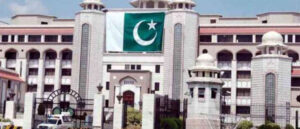Taliban’s Television Ban

The Taliban government has announced the enforcement of strict media policies across Afghanistan, particularly targeting television and other forms of media. These regulations prohibit the broadcast of human images and those of other living beings. Provincial governments have instructed local TV channels to limit broadcasts solely to audio, banning the use of visuals altogether.
Taliban officials claim that these policies are aimed at fully adhering to Islamic teachings. As part of this initiative, the Afghan Ministry of Ethics has begun implementing the “Propagation of Virtue and Prevention of Vice” (PVPV) directive at the provincial level.
The State of Afghan Media
Before the Taliban takeover, approximately 200 television channels were operational in Afghanistan, but this number has now decreased to around 70. Television remains popular in urban areas, where 90% of people rely on it for entertainment and news, while in rural areas, satellite dishes are more commonly used.
Taliban Conservatism and Human Rights
Upon gaining power, the Taliban initially appeared to adopt a softer stance, allowing media and women more opportunities. However, three years later, their increasingly hardline policies show they are unwilling to deviate from their traditional, conservative principles. Measures such as bans on women’s education, co-education, and employment highlight the Taliban’s strict conservatism.
Internal Divisions Within the Taliban and Afghanistan’s Future
Experts suggest that internal divisions persist among the Taliban, with different factions holding either hardline or moderate views. The leadership in Kabul has a relatively softer stance, whereas the Kandahar Shura remains dominated by hardliners. Such divisions could not only affect domestic stability but also pose a threat to Afghanistan’s international reputation and economic well-being.
The International Community and Taliban Policies
Due to their conservative policies, the Taliban are increasingly isolated on the global stage. The country’s dependency on aid from the United Nations and other nations has grown as a result of these measures. Furthermore, the Taliban’s ideology has fueled terrorism in Pakistan and other countries. The Taliban’s governance is proving to be a challenge not only for the Afghan people but also for regional stability.
Conclusion
The Taliban’s media bans and conservative policies do not align with modern-day needs and may further discourage the international community from cooperating with them. There is a pressing need for the global community to condemn these policies and take effective steps to protect human rights in Afghanistan.








